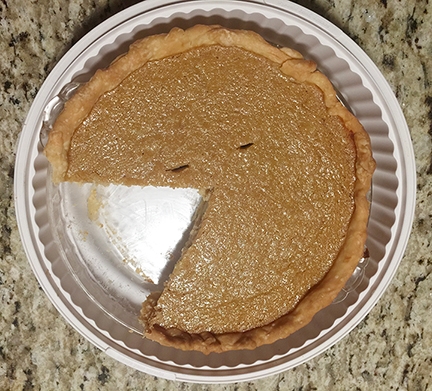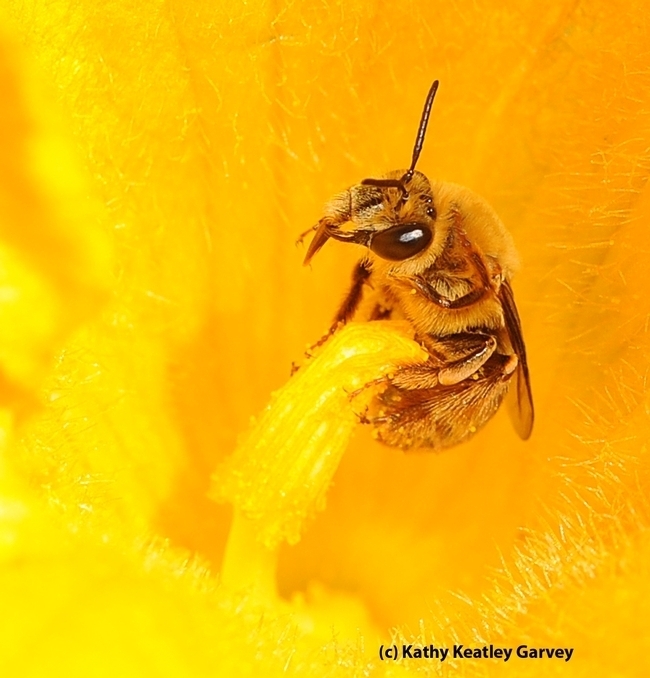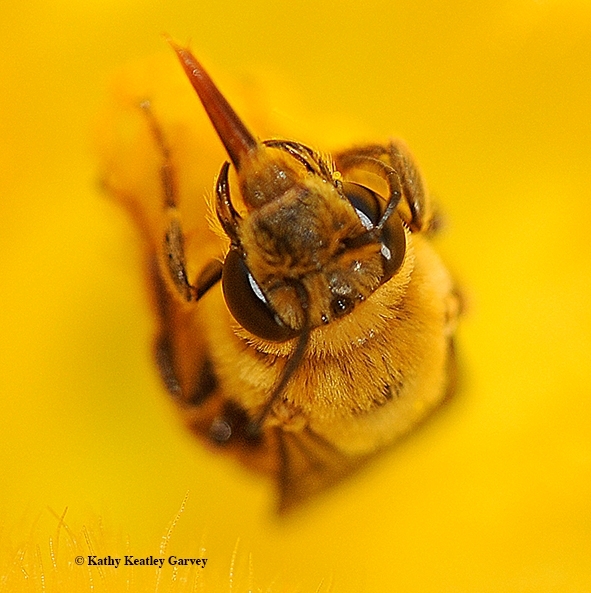
If you've ever been asked that, you may have responded--quite politely--"Small, thank you!"
You probably didn't thank the squash bees.
But as we celebrate Thanksgiving with family and friends, let's remember that squash bees probably pollinated the pumpkin that ended up as a pie on your table.
The squash bee, Peponapis pruinosa, is a specialist that pollinates only the cucurbits or squash family, Cucurbitaceae, which includes pumpkins, squash, gourds, cucumbers and zucchini. P. pruinosa is a species of solitary bee in the tribe Eucerini, the long-horned bees. There's also another genera, Xenoglossa.
Squash bees are early risers, rising before the sun does. They begin pollinating the blossoms as soon as they open. Other bee species, such as honey bees (which are non-natives), don't visit the flowers so early.
Around noon, the blossoms close for the day, so there's a limited time for pollination--and a limited time to admire and photograph them.
The females are ground nesters. "The males sleep in the blossoms at night and wait for the females to arrive," the late late Robbin Thorp (1933-2019), UC Davis distinguished emeritus professor of entomology, told us.
Another attribute: The squash bee is a native of North America, unlike the honey bee.
"Before Europeans brought honey bees to the New World, squash bees were busy aiding the adoption, domestication, spread, and production of squashes and gourds by indigenous peoples throughout the Americas," according to an article by USDA research entomologist James Cane.
"Hey, there, pumpkin, do you want another piece of pie, pollinated by our native bees, the squash bees?"
Attached Images:

The squash bee, Peponapis pruinosa, is a specialist that pollinates only the cucurbits or squash family, Cucurbitaceae. (Photo by Kathy Keatley Garvey)

Close-up of a squash bee. Native to North America, it pollinates cucurbit blossoms early in the morning. The blossoms usually close around noon. (Photo by Kathy Keatley Garvey)